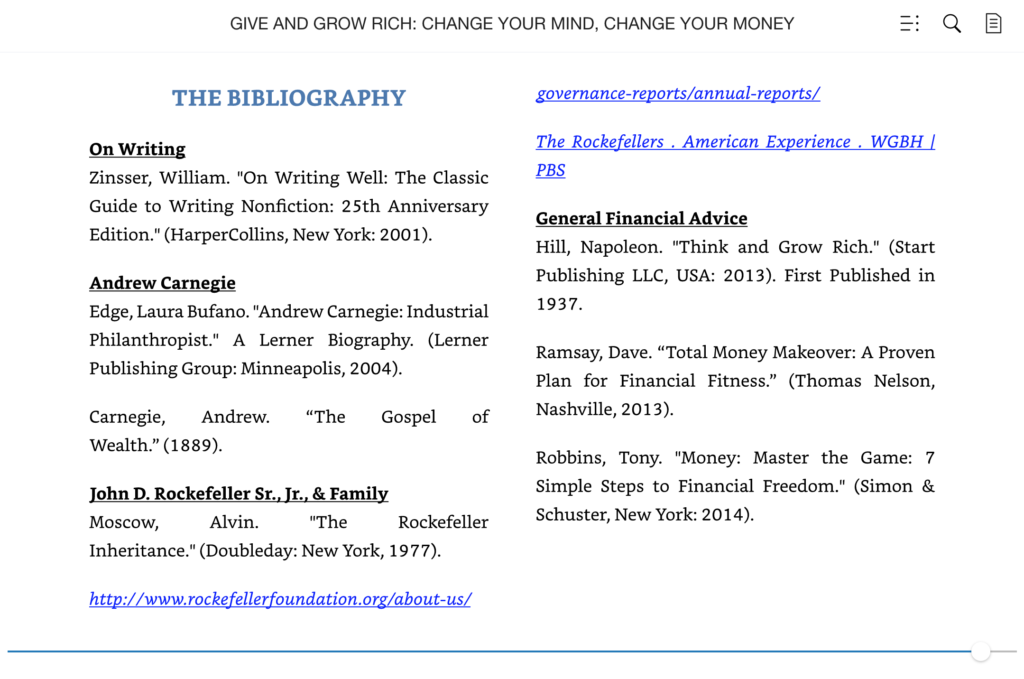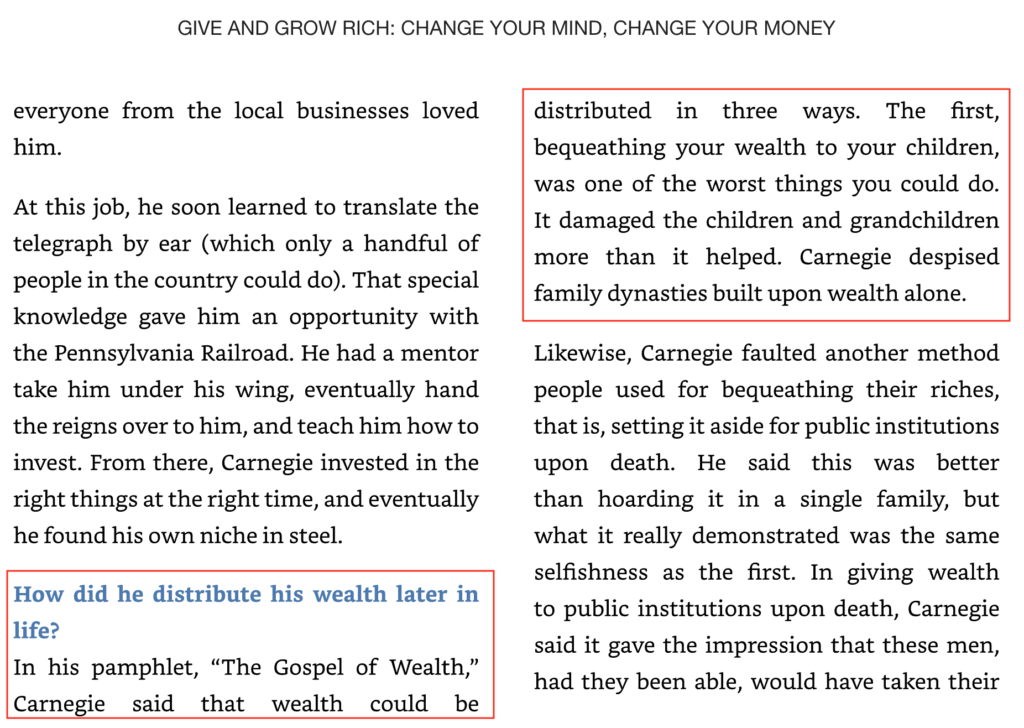Following the proper bibliography style guide for the specific book you write is a crucial aspect of your writing process. If you went to university, you might have been the student who loved finding sources and appropriately formatting their attributions to your work.
However, if you were the student who wanted to focus on the content of your paper and not the specific style guide, you may have struggled. In this article, we discuss the importance of stating sources.
Don’t worry though—this is a straightforward article to help you cut through the small details and see the bigger picture.
Creating a bibliography doesn’t need to be a headache-inducing cram session. It is possible to create a bibliography that follows the appropriate style guide and leaves you with energy left over for your more creative writing. That said, we discuss:
If you’re ready to take a fresh look at sourcing, let’s get started.
What Is A Bibliography?
Merriam-Webster defines a bibliography as “The works or a list of the works referred to in a text or consulted by the author in its production.” If you write an article for academia or publish a professional journal, you will likely need to include some form of bibliography.
Whether you draw your knowledge from your previous learning or conduct research specific to your manuscript, it’s necessary to attribute your findings to the appropriate source. Those who came before you worked hard to make their discoveries and the same can be said of you.
Including a bibliography is a polite nod to the research of others and also helps you maintain your writing integrity. As writers, it’s crucial to lean on others and work together. Research is a part of this.
Helpful Resources.
If you are new to creating your bibliography or it’s been a while since you needed to write one, it may be beneficial for you to use the outlines in professional resources. The APA, MLA, and Chicago Manual of Style are each helpful resources, depending on the format you need.
Whether you choose to do your research online or purchase the newest edition of the Chicago Style, each resource is packed full of answers to your style guide questions. You may need to dig a little, but if you are publishing an academic manuscript that relies heavily on research, your effort will be worthwhile.
Another helpful book on this topic is “They Say, I Say.” Described as “Used and loved by millions…. this is the book that demystifies academic writing and shows how to engage with the views of others,” this could be the next book you add to your writing library.
Bibliography Style Guides.
If you’ve noticed so far two sources are used in this article: The Merriam-Webster Dictionary, as well as the book, They Say, I Say. Both of these sources are important to the article and are referenced through an informal type of in-line citation.
Let’s say you choose to quote someone—be sure to do so in quotes and attribute the quote to the correct person and work. Don’t forget to apply this to inspirational quotes as well. While you may resonate with a specific writer’s way of describing something, and use it often in day-to-day conversation, be sure to give credit where credit is due in writing (as well as in public speaking).
Of course, for more in-depth bibliography needs, use the above-mentioned resources:
- APA
- MLA
- Chicago Manual of Style
But what if you want to keep it simple? Don’t worry, that’s still a possibility. Let’s dive into the specifics.
How To Keep It Simple.
Often, people overthink bibliographies. However, unless you write an academic book, there’s no need to feel like you go crazy trying to do everything perfectly. It is important to give proper attribution, but it can be simpler than it sounds.
For instance, really focus on the importance of simply stating a source via inline text. This way you give your attribution in the moment, your reader knows where to go and you know you already took care of your sourcing.
If an inline text doesn’t quite cut it for you, consider having one of the following at the end of your manuscript:
- Recommended Resources
- Further Reading
Here is an example of a bibliography at the end of a Practical Christian Living book. It gives you, the reader, enough information so you know where to go for further information, but it’s not like it follows APA, MLA, or Chicago Style to the letter of the law.

You can also create a similar statement that works for your style of writing. Just be sure you know the author, work, page or paragraph, and any other pertinent details that would be helpful to your reader.
If they want to read further on the topic you sourced, it’s important you as the author equip them to do so.
Let’s briefly cover inline quotes.
How To Create An Inline Quote
What if your book is more of a straightforward nonfiction, a how-to manual, or your writing voice is friendly? How do you include a proper bibliography without losing the tone of your manuscript?
Instead of taking the formal approach, simply follow a few steps to create an inline quote:
- Note the author’s name
- Note the work the quote comes from
- Put the phrase or sentence in quotes
Giving proper attribution can be as simple as remembering these three key points.
Inline Quote Examples
Sometimes it’s easier to visualize or hear an example rather than simply be told the nuts and bolts of how to create an inline quote. For example, an inline quote could look like this:
In Omer Redden’s book, Give and Grow Rich, he states, “The greatest accomplishment of most billionaires is not how they earned their money, but how they gave it.”
This will help your book flow more smoothly as the quotes are a part of the writing itself. Yes, you draw attention to the author and their book, but you would likely do this in a conversation over coffee as well.
Have you ever been at coffee with a friend and said something similar to this?
“I was reading Bob Iger’s book, The Ride of a Lifetime, the other day and he said that ‘true authority and true leadership come from knowing who you are and not pretending to be anything else.’”
Whether or not you realize it, you just spoke a verbal inline quote. Writing them into your manuscript can be just as simple. Here’s another example from Give and Grow Rich, but in this case, it shows how he did it in the manuscript:

Mutual Respect, Credit, and Growth.
Including a bibliography or another form of appropriate attribution not only helps save you from potential legal issues, but builds your reputation as a creative.
The creative industry can be a difficult one at first, especially because many creatives seem to share themselves in their writing. Giving credit where credit is due shows your respect for the writers that came before you and contributes to your growth as a creative.
Not only will your book be a well-rounded array of resources but you will grow in your knowledge base as well.
As you can see from this article, how indepth a bibliography is can be largely dependent on the type of writing you do. Pay attention to your genre, your writing voice, and your audience. Armed with this knowledge, choose any of the above resources to help you get to work.
Your readers will appreciate you, your writing will carry more credibility, and the writers you use will appreciate your effort. Write on!
